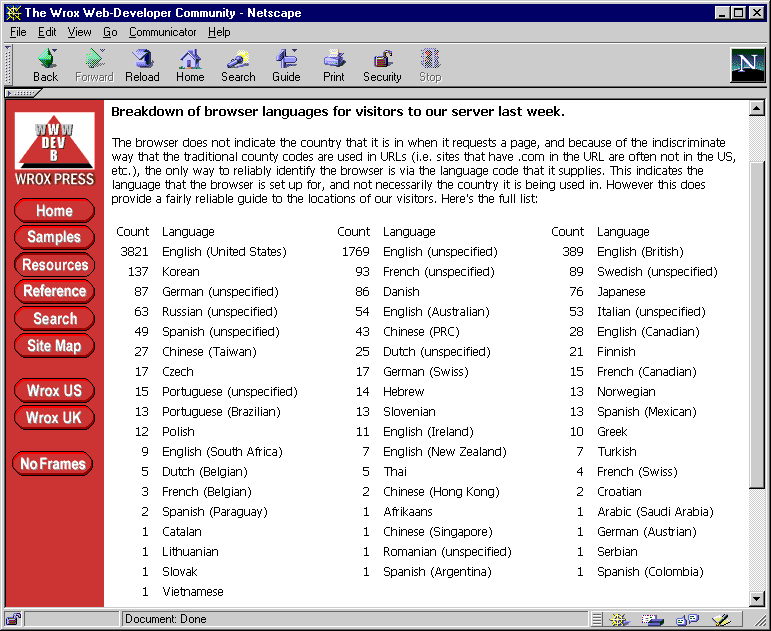
We've seen several ways that the data we collect in our log files can provide vital information about how our site is performing. Not only that, it also provides equally vital information about where it isn’t performing. For example, if we are producing software for Unix, we would probably consider there to be a problem if we didn’t get a good proportion of Unix operating systems appearing in our traffic analysis. On the other hand, if we only produce PC software but get a lot of hits from Unix, we might like to consider whether we are missing out on a potential market.
Traffic analysis can also help to guide our site design. If we build lots of pages aimed specifically at Navigator 4 and 5, using Dynamic HTML, we'll expect to see at least some traffic from that browser. If not, we're wasting our time. Alternatively, if the largest proportion of existing visitors use Internet Explorer 4 or 5, we should consider whether this really is because we provide them with lots of useful content. It might be because our site doesn’t work properly with Navigator and other browsers.
By monitoring performance of our site over time, we can watch for trends. This might be the growth in one operating system over another, or one browser over another. It might be changes in the popularity of different sections of the site's content, changes in the total traffic volume for different seasons of the year, or growth in the number of visitors from one country. All this gives us ways to plan the future expansion and updating of the site:

The other major area where site performance monitoring is invaluable is in traffic volume measurement. Changes in the periods when our site is busiest, or general growth in the volume of data transferred, can affect the physical performance of our servers. By measuring general traffic volume trends over time, we should be able to make early and accurate decisions about when we need a higher speed connection, or an upgrade to our servers. It may also provide that extra bit of evidence that will persuade our financial director to part with the cash for a couple of new servers—which is where we came in at the start of this chapter.